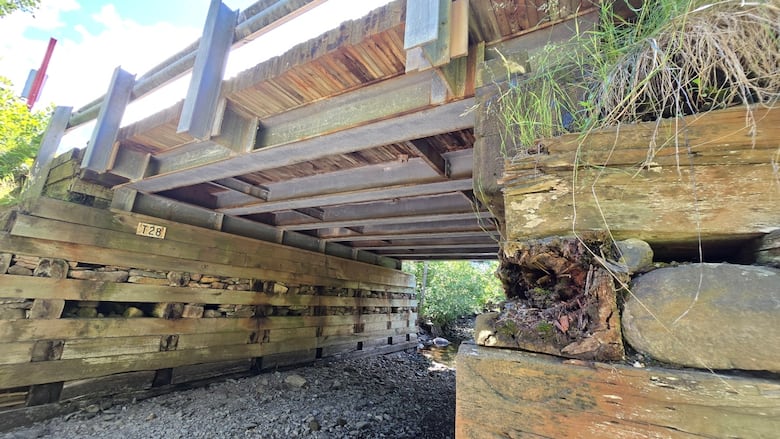N.B. bridges still crumbling 12 years after dire report
Number of bridges in poor condition has increased since 2013

A 2013 report from New Brunswick's auditor general warned that 293 of the province's bridges were in "poor" condition and required significant maintenance work to keep them in service.
Kim MacPherson stated at the time that investment in regular maintenance and bridge rehabilitation was steadily decreasing and bridge repair work wasn't being done on a timely basis.
In a 500-page report warning about crumbling infrastructure around the province, MacPherson chided the province for using short-term fixes instead of long-term solutions.
Twelve years later, it doesn't appear that much has changed. There are now 309 bridges categorized as "poor" by the province's own metrics — a roughly five per cent increase, despite a dozen years of maintenance, repairs, replacements and decommissions.
According to the province's own Bridge Condition Index, bridges are scored by inspectors out of 100. The higher the score the better, the condition of the bridge.
Numbers from those publicly available statistics show that as of April 30, 2025, 309 bridges and culverts scored 60 or lower, indicating they are in need of significant repairs, maintenance or replacement.

While some infrastructure scored as low as one out of 100, according to the province's website, they're still open to public use.
"Some structures have a low index, but it is important to note that if a structure is deemed unsafe action will immediately be taken by the department to remedy the situation which could include closing the structure," states a disclaimer on the index.
CBC News requested an interview with the minister of Transportation and Infrastructure, but no one was made available to speak on the matter.
Former PC transportation minister Jeff Carr said the reason so many of New Brunswick's bridges are decaying is because they're similar in age.
"Most of our infrastructure was established 50, 60 years ago," said Carr. "A lot of it was built at the same time, so they're all coming — or most of them are coming — to end of life at the same time."
Carr said during his tenure there were two bottlenecks in getting bridges repaired. One was for specialists designing repairs and replacement bridges. The other was money.
"There's a number at the department that will tell you that if we refurbished or replaced every bridge that's due in the next 20 years, it's $20 billion," said Carr. "So that is the main struggle."

Despite the slight increase in the number of crossings in poor condition, there have been some improvements. In 2013, 163 bridges had implemented weight restrictions as a safety precaution. This year, that number has been reduced to 57.
The number of bridges on the province's index has been significantly reduced. In 2013, MacPherson stated DTI was responsible for 2,608 structures. This year, the department listed 1,405 bridges — 1,203 fewer than 12 years ago, a 45 per cent reduction.
No one from the department responded to CBC's request for clarification about the reduction.
The province has worked to decommission several bridges around New Brunswick in recent years instead of repairing or replacing them. The Jemseg Bridge, for example, is still standing but inaccessible for use. While it's still the province's responsibility and is awaiting decommissioning — a job estimated to cost between $10 and $15 million — it does not show up on the province's Bridge Condition Index.
Other crossings, like the Nashwaak River Bridge, have since been removed completely.
The index does not include any of the province's 56 covered bridges, but it does include its footbridges.


